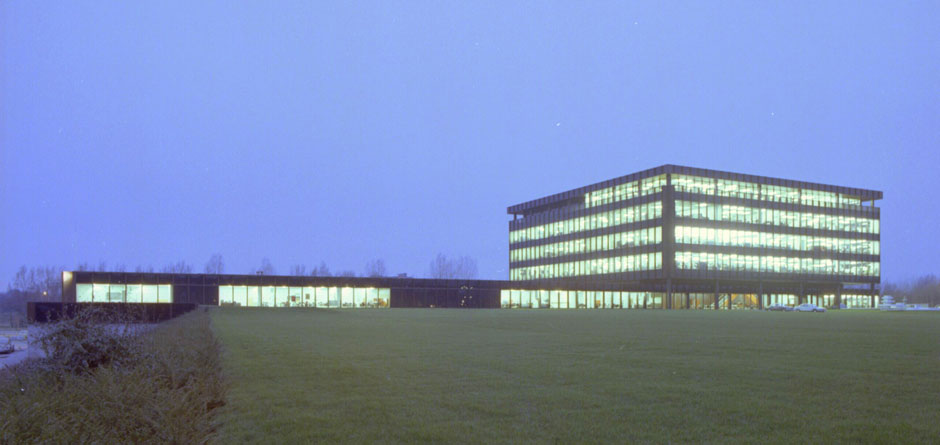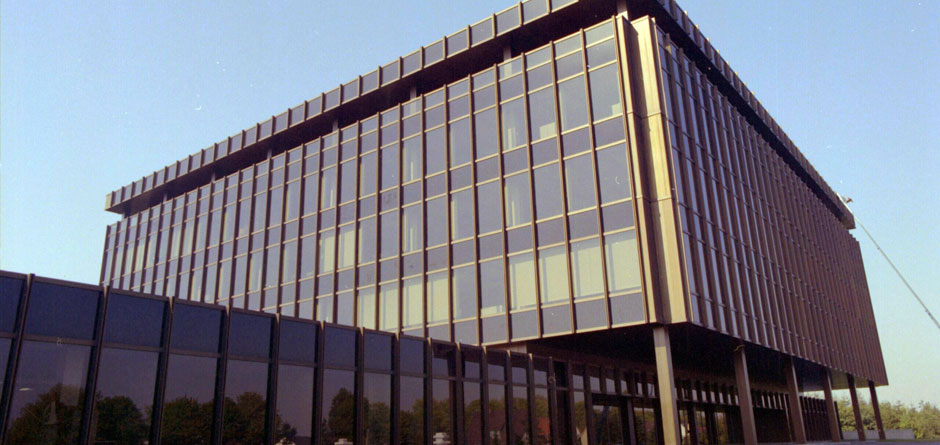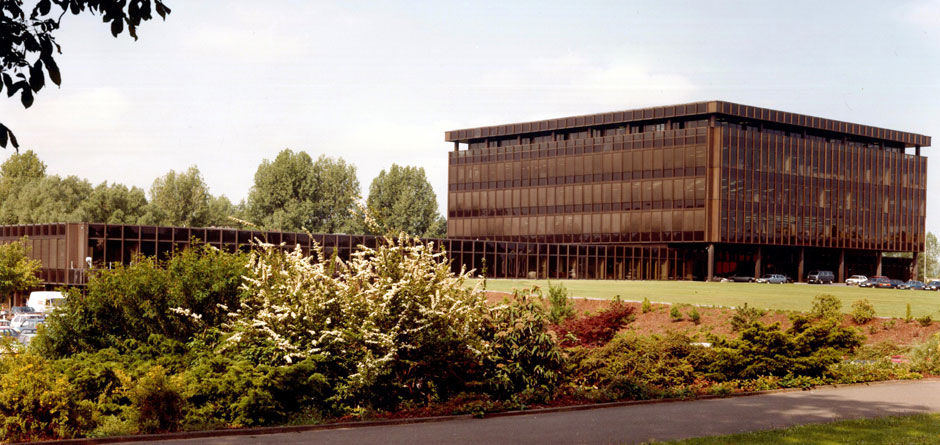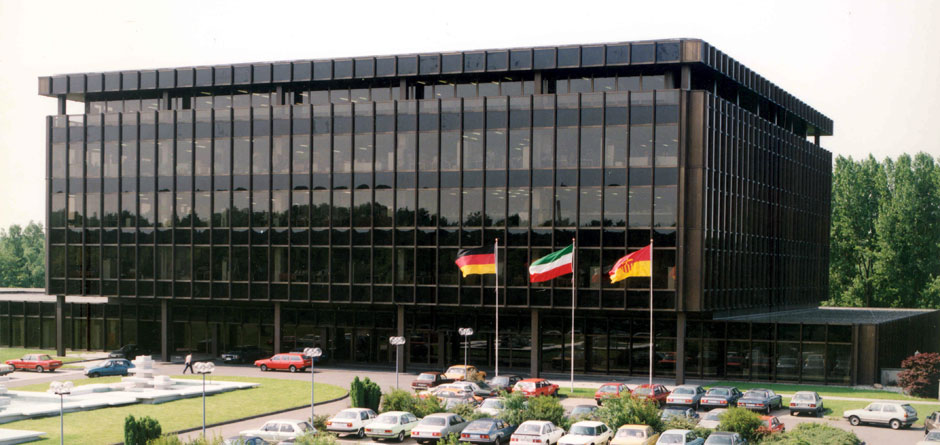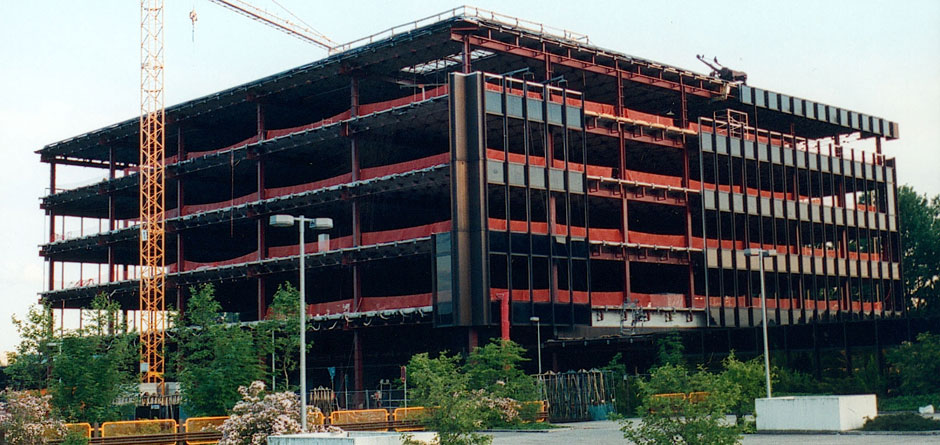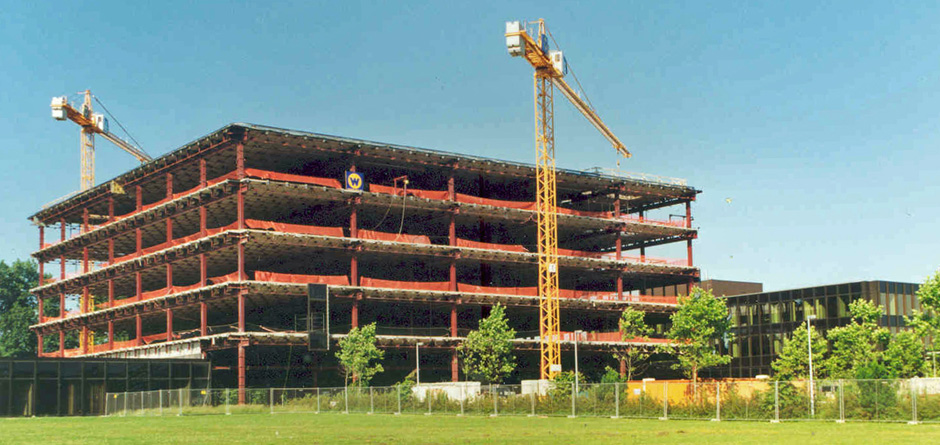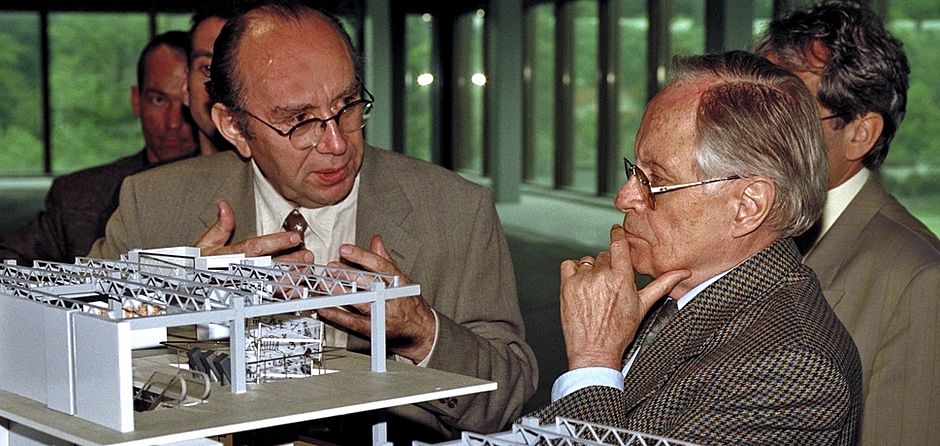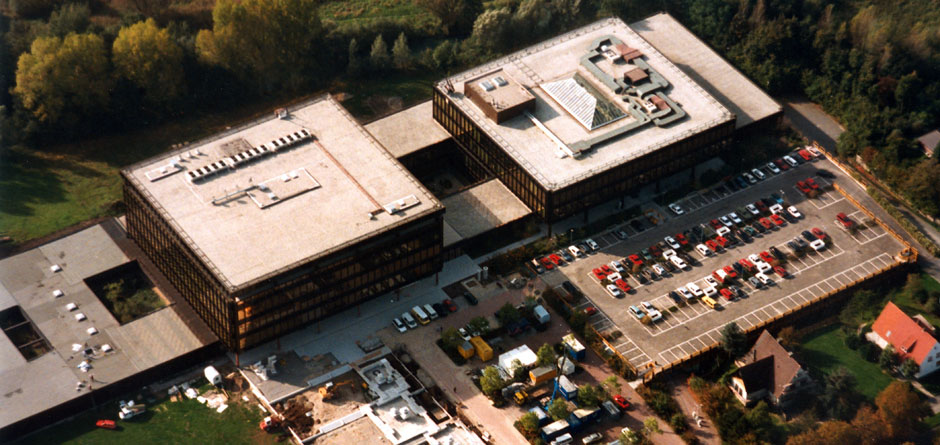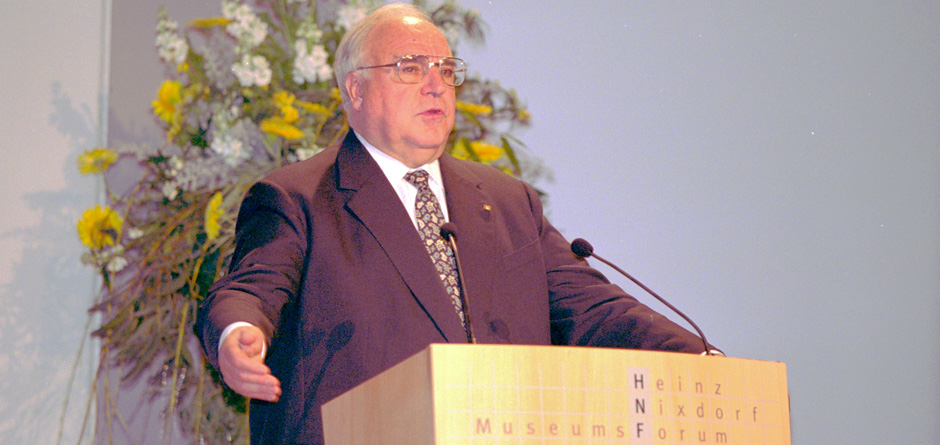Chronology
1977
To mark the 25th company anniversary of Nixdorf Computer AG in 1977, Heinz Nixdorf is presented with a number of "birthday gifts" in the form of historic office machines made by Wanderer, Exacta, Astra etc.. This gives him the idea of acquiring a collection of IT devices for a subsequent company or computer museum.
1983/84
The idea of a museum assumes a more concrete form and Heinz Nixdorf purchases a large collection of objects with the support of Cologne-based office machines expert Uwe Breker. A year later Prof. Ludwig Thürmer and his partner from the Berlin HdK (University of the Arts) Gerd Diel propose an initial exhibition concept, for which there is as yet no fixed location.
1986
The project is more or less shelved following the death of Heinz Nixdorf on 17 March. However, the responsible NCAG employee Willi Lenz ensures that contact with the city of Paderborn is maintained and a "computer museum" working group is kept going.
1990
Over the years, the efforts made by Willi Lenz to promote the idea in the city and among the Nixdorf foundations result in a city council decision in favour of establishment of a computer museum.
1992
The Nixdorf foundations thereupon finance a feasibility study to be carried out by a museum commission comprising the Berlin architects (AGM), Siemens Nixdorf employee Norbert Ryska and experts from outside the company. The aim is to establish a computer museum to house the Nixdorf collection and depict the product history of Nixdorf Computer AG, among other aspects.
The project team develops a broad approach to cover the history of arithmetic, writing and communication from the ancient world to the present day and into the future, in line with the "back to the roots" principle. A total of 60 exhibition topics are identified and earmarked for implementation.
In October this concept is presented to the Board of the Nixdorf foundations along with the idea that the exhibition be housed in the empty former company headquarters on Fürstenallee. The Board of the Nixdorf foundations, then headed by Dr. Gerhard Schmidt, decides after a period of deliberation to implement the project in the Nixdorf building in question.
At the end of November, Stiftung Westfalen founds the non-profit "Forum für Informationstechnik GmbH" as the supporting company, appointing Norbert Ryska as Managing Director.
1993-1996
The Berlin architects (AGM) and a scientific and technical working group in Paderborn start intensive work on the concept as of mid-1993. A total of 100 experts from around the world are involved in the consultations, while work on the envisaged topics is entrusted to twelve local scientists. Meanwhile, a dozen interior designers, designers and multimedia programmers are involved in the project at AGM in Berlin. Simultaneous work on 60 exhibitions areas calls for ongoing complex coordination and planning between scientists, designers, technicians and structural engineers.
1996
On 24 October 1996, the HNF is officially opened by Federal Chancellor Helmut Kohl.
Location on Fürstenallee
In retrospect, the choice of location for the Heinz Nixdorf MuseumsForum seems almost inevitable: the building on Fürstenallee in Paderborn once served as the company headquarters of Nixdorf Computer AG.
Integration of the exhibition and function rooms of the HNF in the existing architecture is such a transparent use of the existing premises that the objective visitor may well not even notice the history of the building. In fact, however, the location of the museum was only decided upon following much deliberation and decision-making.
Design in the style of Mies van der Rohe
Architect Hans Mohr designed the building in 1972 in line with the basic architectural concept provided by Heinz Nixdorf. The company founder took care to ensure that all the Nixdorf company buildings boasted a uniform appearance. In the course of his business trips to the USA, Heinz Nixdorf got to know and came to appreciate the impressive buildings designed by Mies van der Rohe, one of the most influential founding fathers of modern architecture.
It was from Mies van der Rohe's philosophy and design principles that Nixdorf developed his own architectural style. All the Nixdorf buildings boast a simple, grid-like design in line with van der Rohe's principle of "less is more". The constructions are highly visible. The few load-bearing elements generate a feeling of spatial freedom, while the direct contact with nature is engendered by extensive glazing throughout.
